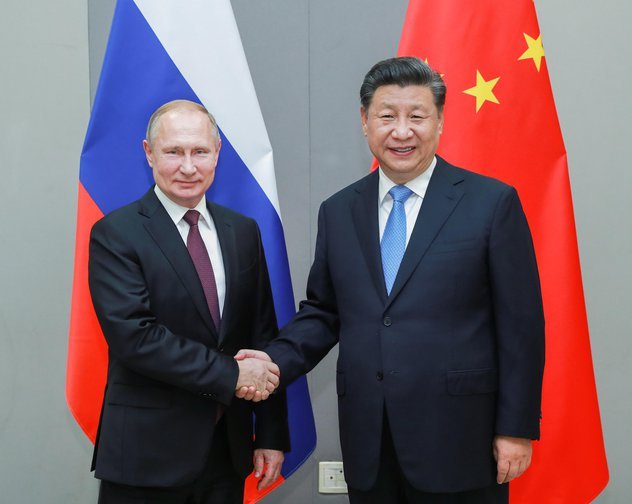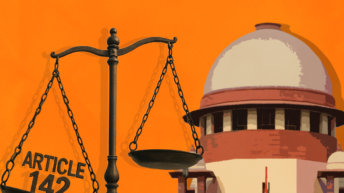
Washington’s increasing pressure on Beijing to distance itself from Moscow in its ongoing hostilities with Ukraine could have the contrary effect of driving both powers closer, mainly due to mutual resistance to American hegemony and stakes in a multipolar world. The setback seems inevitable as, at a time when the US-NATO proxy war in Ukraine is not going well, Washington has escalated its rhetoric against China vis-à-vis Taiwan despite having accepted the One China Policy vide the Shanghai Communiqué of 1972.
In an interesting development, following the recent visit of German Chancellor Olaf Scholz to Washington, the US and German media have reported that a pro-Ukraine group was responsible for the bombing of the Nord Stream 1 and 2 pipelines in the Baltic Sea in late September of 2022. The Kiev regime has strenuously denied the allegations.
Observers view the near synchronous reports as a near-official denial of American journalist Seymour Hersh’s investigative report that the United States was behind the sabotage, and a prelude to Washington stepping back from the conflict and allowing the European Union and NATO to wash their hands off the Kiev regime. Thus hung out to dry, President Zelensky will be forced to negotiate terms with Moscow, or make way for a leadership that will end the conflict.
This would enable Washington to focus on Taiwan as the symbol of its larger competition with Beijing in trade and in the Indo-Pacific. Should this happen, Beijing will not have to cross the rubicon by supplying Moscow with armaments and other support, but it will have more incentive to draw closer to Russia.
Sino-US relations became especially fraught in February when Washington accused Beijing of using spy balloons over North America; one was later shot down by US fighter jets. Beijing retorted that the object was a weather monitoring balloon that was blown off-course by winds.
One of the two other balloons shot down around the same time belonged to an Illinois-based hobbyist club, the Northern Illinois Bottlecap Balloon Brigade (NIBBB). Possibly embarrassed over the shooting down of “pico balloons” used by ham radio enthusiasts, the authorities refused to answer any enquiries regarding the missing balloons.
First indications of Beijing’s hardening attitude came with President Xi Jinping lambasting a Washington-led campaign against China, “Western countries – led by the US – have implemented all-round containment, encirclement and suppression against us, bringing unprecedentedly severe challenges to our country’s development.” He was addressing the annual legislative sessions of the National People’s Congress (March 5-13, 2023) in Beijing; which confirmed Xi’s third term as President, ushering in a new economic leadership. The charge of “containment” refers to Sino-US differences over trade, technology, geopolitical influence and perceptions of Russia’s action in Ukraine. He warned the delegates that China “faces profound and complex changes in both the domestic and international landscape.”
Last month, US President Biden referred to the historic rivalry between democracies and autocracies in his national security strategy. This was perceived as a sign that Washington favours regime change in China, and could push it closer to Russia. Observers believe that President Xi’s diatribe against the US could also be an attempt to deflect domestic criticisms of his policies, especially the tough Covid controls that hurt the economy and affected the growth of technology companies.
On March 5, outgoing Premier Li Keqiang informed the NPC that included representatives from China’s national chamber of commerce, of the lowest GDP target in decades, a pointer to a difficult economic recovery. In fact, the Chinese economy posted its second-worst annual growth rate in nearly half a century. Customs data showed China’s exports fell nearly 7% in the January-to-February period, as global demand weakened. Imports dropped 10.2%. China’s exports to the US fell 15%, while imports increased by about 3%. The US is China’s single largest trading partner.
The President tried to assuage private sector anxieties caused by regulatory crackdowns and pandemic lockdowns, assuring that the Communist Party “has always regarded private enterprises and private entrepreneurs as our own people,” and would support them in their difficulties. He urged them to participate in boosting growth, jobs and tech innovation to hasten economic recovery.
Despite its relatively small size versus the State sector, China’s private sector contributes more than 60% of the GDP and over 80% of employment, according to official statistics. President Xi directed the government to remove institutional barriers that inhibit private businesses from entering certain industries, and to protect the property rights of private companies and entrepreneurs and ensure parity between state firms and private companies to “boost market expectations and confidence”.
Addressing concerns that top elites made asymmetric gains from the economic boom, President Xi urged the business community to strive for wealth with a sense of responsibility, in consonance with his plan for “common prosperity”, that is, more equitable redistribution of China’s wealth.
Taking cognisance of western sanctions and trade restrictions, President Xi emphasised self-reliance and said China must escalate science and technology development, open up new areas in development and foster new growth drivers in the face of fierce international competition. He called upon Chinese industry, academia and research institutes to join hands to support “original and pioneering research”.
China’s principal concerns relate to US restrictions on access to US semiconductor and Artificial Intelligence technology, on national security grounds, and foreign sanctions or restrictions on some Chinese companies and officials over crackdowns in Hong Kong and Xinjiang, and possible support to Russia in Ukraine.
The leadership reportedly enunciated “the two must-haves”, that is, manufacturing and a dependable grain and food supply. The draft budget figures announced when the session began on March 5 saw increased funding of over 13% for national stockpiling of grain and other base items. The finance ministry and state planner also announced modest budget increases for the technology sector, and acceleration of hard tech infrastructure construction, including in AI, 5G and big data.
Observers believe that these announcements bring an end to government crackdowns on the technology sector and entrepreneurs like Jack Ma. The focus now is on supporting internet companies to grow globally, create jobs and expand consumption.
References:
https://www.wsj.com/articles/chinas-xi-jinping-takes-rare-direct-aim-at-u-s-in-speech-5d8fde1a
https://www.ft.com/content/e246c590-e0c6-4d07-bf80-f35c22c40d91





Add comment